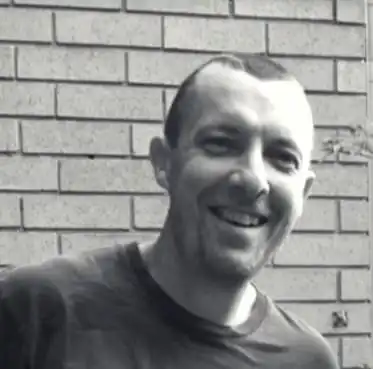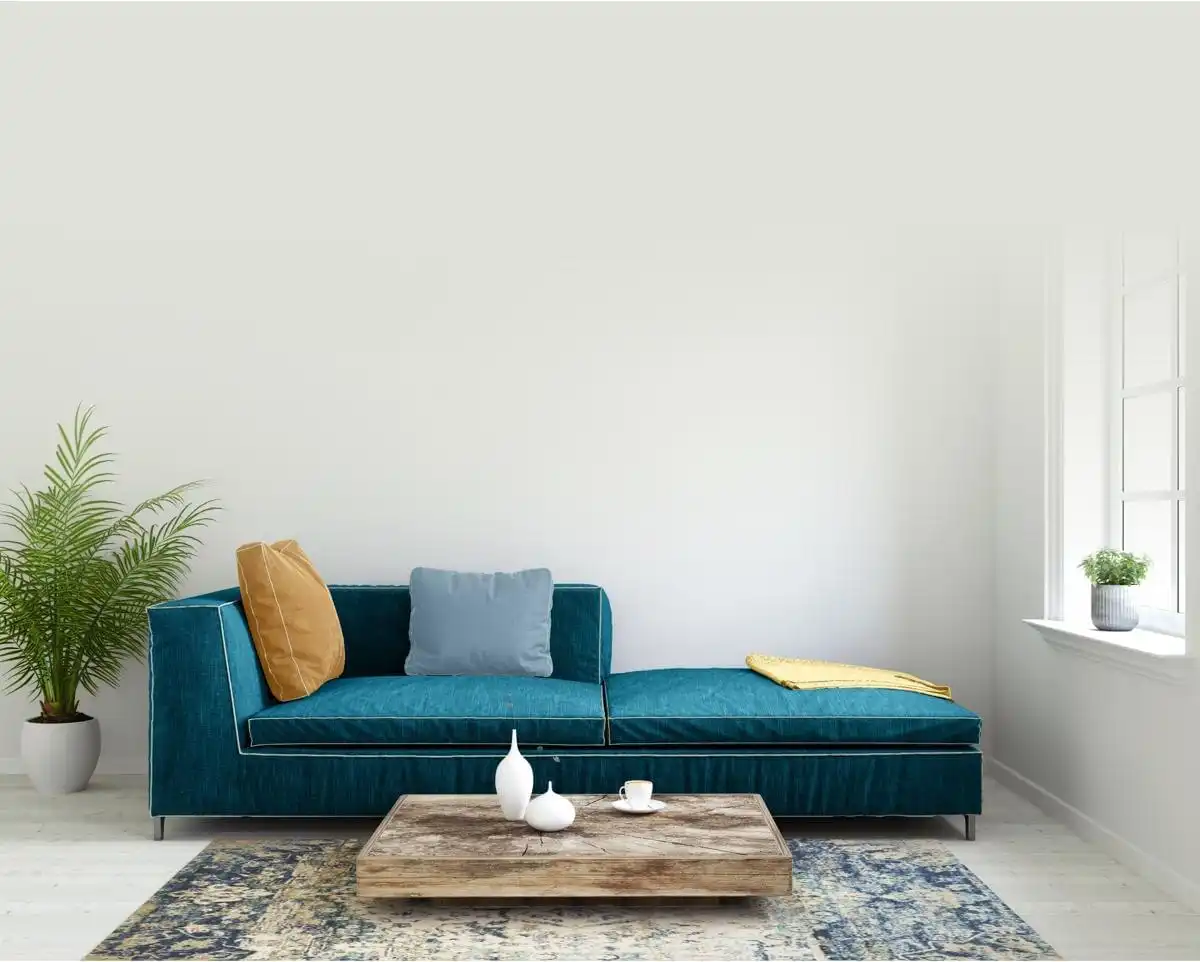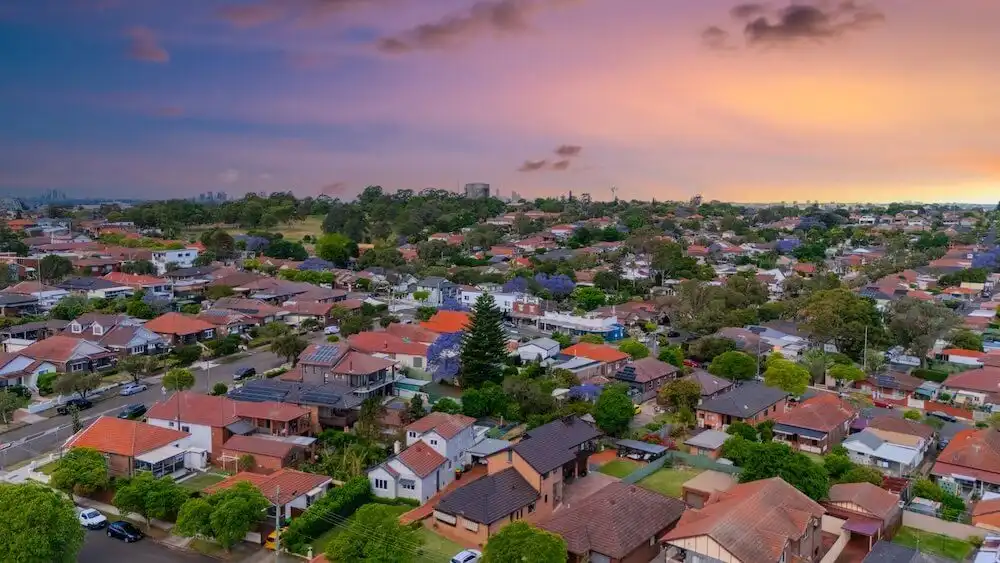Australia: Building up a nation of renters
Are Aussies destined to become a nation of renters?
If you look at the data it increasingly looks that way, as more of us find home ownership to be an impossible dream - thanks largely to a runaway property market that has led to eye-watering property prices.
National overview: rental landscape

According to the 2016 ABS census 30.9% of households were renting, up from 29.6% five years earlier, demonstrating a small, though clear decline in levels of home ownership.
The ABS Survey of Income and Housing also records a gradual decline in home ownership, with owners representing 70.6% of all households in 1999–00, 67.2% in 2013-14 and 67.1% in 2016.
Dig into the ABS data further and it's evident that young people have been disproportionately impacted by the relative unaffordability of property, with home ownership rates declining for people 25-34 years from 60% in 1961 to 47% in 2011. This has dropped further to just 38.6% in 2013-14.
"Dig into the ABS data further and it's evident that young people have been disproportionately impacted by the relative unaffordability of property"
The peak of home ownership in Australia was in 1966 when 71.4% of Aussies owned a home.
A separate survey by the Household, Income and Labour Dynamics in Australia (HILDA), which collects economic and social information from selected households, also suggests a decline in home ownership rates. It found that home ownership fell 3.9% between 2001 and 2014, from 68.8% of households to 64.9%.
Apartment living on the rise
The number of Australians taking up apartment living is also higher, with the census finding that over the past 25 years, the number of occupied apartments in Australia has increased by 78% to 1,214,372 dwellings. The move to apartment living has shown a steady increase since 1991 although overall growth has slowed.
The number of people living in separate houses has also increased over the same timeframe. This is due to a number of factors, some interrelated, including population growth, convenience and cost. Apartments are not only cheaper to buy than a house, but they are also often situated close to transport infrastructure and/or vibrant inner cities, entertainment or amenities.
Higher density apartments also allow larger numbers of people to be housed in our increasingly crowded urban areas - specifically in capital cities like Sydney, Melbourne and Brisbane.
It’s also useful to look at median asking rents, which impacts how much disposable income renters have.
Rents on the up

According to property data analysts CoreLogic, rents have risen across the country by 0.4% over the past year, to March 2019. All capital cities, except Darwin, recorded a rise in rents, with Hobart recording the highest increase over the past 12 months (+5.4 per cent). The median rent across the capital cities is currently $465/week, while regional rents are at $378/week.
What explains this uniform rise in rents across much of the country?
The most obvious reason is that there is significant demand for housing - after all everyone needs a place to live, though many are not able to afford to buy a property. This is in part due to the large numbers of people investing in property - purely for speculation - which has driven property prices up.
The Australian Housing and Urban Research Institute (AHURI) found that the private rental sector has outpaced household growth by more than double, having grown by 38% over 10 years (2006-2016). Renters are also spending more of their salary on rent, a factor compounded by incomes failing to keep up with housing and lifestyle costs.
"According to AHURI, the private rental sector has outpaced household growth by more than double"
Understanding rental vacancy rates is also useful when examining renting as a phenomenon.
Understanding national vacancy rates
Vacancy rates are typically expressed as a percentage, which is an indication of how many properties are available to rent in a particular postcode or suburb. Higher rates - or percentages - indicate a surplus of rental properties, and often lead to lower asking rents, while a lower vacancy rate indicates more demand and often are associated with high or rising rental rates.
Overall, according to SQM Research, the national rental vacancy rate was at 2.2% in May 2019. Sydney and Darwin have the highest vacancy rates of the capital cities at 3.3%, which is classed as a tenant market as there are more properties to choose from, and one can be more choosy.
Contrast this with Hobart where the vacancy rate is just 0.6% - reflecting a dire shortage of suitable accommodation to meet demand.
To better understand this, let's take a look at our capital cities, specifically the number of owner occupiers vs renters, median asking rents and vacancy rates.
Sydney
Change in number of owner occupiers and renters from 2009 - 2019
Renter
The number of renters for both houses and units have both increased in 10 years. The percentage of renters for houses has only grown by 1% whilst percentage of renters for units has grown significantly from 52% in 2009 to 67% in 2019. This could be a reflection of housing unaffordability in Sydney which has forced many to move to (cheaper) apartment living.
Houses
+6%
Units
+29%
Owner Occupier
A decline is seen for owner occupiers in both houses and units, with owner occupiers for houses and units decreasing 1% and 33% in 10 years.
Houses
-1%
Units
-33%
Change in median asking rent over 10 years
Median asking rent in Sydney for houses has increased by $105 since 2009. For units, it is higher with those renting units paying $135 more than they would 10 years ago.
+24%
Asking rent for houses
2009
$445
2019
$550
+34%
Asking rent for units
2009
$395
2019
$530
Change in vacancy rates from 2009 - 2019
Vacancy rates for houses and units have remained quite stable with houses increasing slightly from 4.60% in 2009 to 4.67% in 2019. Units have shifted even less with a difference in vacancy rate of 0.01% in 10 years.
Houses
+2%
Units
+0%
Melbourne
Change in number of owner occupiers and renters from 2009 - 2019
Renter
The percentage of Melbourne renters in houses has remained the same at 22%. Renters in units however have increased from 57% in 2009 to 70% in 2019. This follows a very similar trend to Sydney.
Houses
+0%
Units
+23%
Owner Occupier
Similar to the trend in renting, the percentage of owner occupiers have remained the same at 78% over 10 years whilst the number of owner occupiers for units have decreased from 42% in 2009 to 29% in 2019.
Houses
+0%
Units
-31%
Change in median asking rent over 10 years
Bad news for renters in Melbourne. Of all the capital cities, Melbourne is near the top of the list for asking rent. The percentage change in asking rent over the last decade in Melbourne exceeds that of Sydney, with an increase of $115 for houses and $120 for units.
+34%
Asking rent for houses
2009
$335
2019
$450
+40%
Asking rent for units
2009
$300
2019
$420
Change in vacancy rates from 2009 - 2019
Vacancy rates in Melbourne for both houses and units have decreased over the decade. Decline in vacancy rates indicate that there are less properties on the market up for rent than there was 10 years ago. This could be due to the increase in interstate migration seen in the last few years.
Houses
-34%
Units
-36%
Hobart
Change in number of owner occupiers and renters from 2009 - 2019
Renter
The percentage of renters in houses has increased slightly from 14% in 2009 to 15% in 2019. The percentage of renters for units on the other hand has increased from 43% to 56% in 2009 and 2019, respectively.
Houses
+7%
Units
+30%
Owner Occupier
Owner occupiers have remained quite stable and have decreased for units from 56% in 2009 to 43% in 2019.
Houses
-1%
Units
-23%
Change in median asking rent over 10 years
Median asking rent for both houses and units have had the highest percentage change over 10 years of all the captial cities. Asking rent for houses and units are $140 and $105 more than they were in 2009.
+47%
Asking rent for houses
2009
$300
2019
$440
+40%
Asking rent for units
2009
$260
2019
$365
Change in vacancy rates from 2009 - 2019
Vacancy rates for both houses and units are significantly lower than there were a decade ago. For houses, vacancy rates has more than halved from 4.93% in 2009 to 2.05% in 2019. Units have experienced the highest percentage change in vacancy rates from all the capital cities falling from 4.84% to 1.72%.
The tightening of Hobart vacancy rates could be due to migration. ABS data suggests that interstate and overseas migration to Hobart rose 25%.
Houses
-58%
Units
-64%
Brisbane
Change in number of owner occupiers and renters from 2009 - 2019
Renter
The percentage of renters in houses in Brisbane has seen the highest percentage change loss of all the capital cities at -8%. In 2009, the percentage of renters in houses were 24% and today, it sits at 22%. Renters in units on the other hand have seen a modest increase from 54% in 2009 to 60% in 2019.
Houses
-8%
Units
+11%
Owner Occupier
The percentage of owner occupiers in Brisbane houses has been stable at 74-75% over the last decade. Owner occupiers for units however have dropped from 45% in 2009 to 32% in 2019.
Houses
+1%
Units
-29%
Change in median asking rent over 10 years
Good news for Brisbane renters! Median asking rent in Brisbane has been quite mild over the last 10 years with houses increasing $75 since 2009 and $48 for units.
+21%
Asking rent for houses
2009
$350
2019
$425
+15%
Asking rent for units
2009
$330
2019
$378
Change in vacancy rates from 2009 - 2019
Vacancy rates for houses has decreased slightly over 10 years from 4.22% to 3.98%. Vacancy rates for units have increased from 4.21% to 4.59% indicating a slightly poorer rental market than it previously was.
Houses
-6%
Units
+9%
Canberra
Change in number of owner occupiers and renters from 2009 - 2019
Renter
The percentage of renters in Canberra houses has remained the same over 10 years at 15%. Units on the other hand have increased the percentage of renters from 41% in 2009 to 55% in 2019.
Houses
+0%
Units
+34%
Owner Occupier
Owner occupiers in Canberra houses have remained the same at 85% (one of the highest of all the capital cities), whilst the percentage of owner occupiers in units have decreased from 58% to 44% in the 10 years to 2019.
Houses
+0%
Units
-24%
Change in median asking rent over 10 years
Those renting houses in Canberra are paying $120 more than they would have 10 years ago. Those renting in units are now paying on average $465 in 2019, $90 more than it was in 2009.
+28%
Asking rent for houses
2009
$430
2019
$550
+24%
Asking rent for units
2009
$375
2019
$465
Change in vacancy rates from 2009 - 2019
The percentage change in vacancy rate has dropped for both houses and units. 2019 vacancy rates for houses sit at 4.67% and for units 2.13%. The decrease signifies more demand for renters than there was a decade ago.
Houses
-45%
Units
-41%
Adelaide
Change in number of owner occupiers and renters from 2009 - 2019
Renter
The percentage change of number of renters in houses has been quite mild, increasing 1% over the 10 years from 19% in 2009 to 20% in 2019. The percentage of renters in units has had the lowest change in all the capital cities, increasing only 6% in the last decade.
Houses
+5%
Units
+10%
Owner Occupier
Following a similar trend with percentage of renters, the percentage of owner occupiers for houses has remained the same over the years 2009-2019 at 80%. The percentage change in owner occupiers in units has decreased but at the lowest rate of all the capital cities.
Houses
+0%
Units
-18%
Change in median asking rent over 10 years
Asking rent for both houses and units have increased however renting in Adelaide is still the cheapest of all the capital cities with a median of $380 for houses and $310 for units.
+31%
Asking rent for houses
2009
$290
2019
$380
+24%
Asking rent for units
2009
$250
2019
$310
Change in vacancy rates from 2009 - 2019
Vacancy rates have both declined for houses and units over the decade indicating that there is more demand for renting than there was in 2009. The vacancy rates currently hold at 3.13% for houses and 3.47% for units.
Houses
-22%
Units
-16%
Perth
Change in number of owner occupiers and renters from 2009 - 2019
Renter
The percentage of those renting houses has decreased slightly from 19% to 18% from 2009-2019. Those renting units on the other hand have increased quite drastically with the highest percentage change in all of the capital cities at +44%. The percentage of renters in 2019 is currently 46%.
Houses
-5%
Units
+44%
Owner Occupier
The percentage of owner occupiers in houses has increased 1% over the last decade and now sits at 80%. For units, owner occupier rates have declined from 65% in 2009 to 51% in 2019.
Houses
+1%
Units
-22%
Change in median asking rent over 10 years
Good news for renters in Perth! Percentage change in median asking rent has been the lowest for both houses and units. Over 10 years, asking rent for houses has increased by $20 and for units, only $10.
+6%
Asking rent for houses
2009
$360
2019
$380
+3%
Asking rent for units
2009
$330
2019
$340
Change in vacancy rates from 2009 - 2019
Vacancy rates in Perth houses and units have both increased significantly over 10 years. Vacancy rates for houses have jumped from 3.92% in 2009 to 6.44% in 2019. A similar story is seen with units skyrocketing from 4.07% in 2009 to 7.19% a decade later.
These are the highest vacancy rates seen throughout all the capital cities and could be a result of the mining boom bust. High vacancy rates indicate more apartments on the market, meaning that it is better for tenants as they have more choice.
Houses
+64%
Units
+77%
Darwin
Change in number of owner occupiers and renters from 2009 - 2019
Renter
The percentage of renters in houses has decreased slightly from 34% to 33% in the 10 years from 2009-2019. The percentage of renters for units, however, have increased by a percentage of +24% and now sits at 82%, the highest percentage of renters in units for all capital cities.
Houses
-3%
Units
+24%
Owner Occupier
The percentage of owner occupiers in Darwin houses has had the highest percentage change of all the capital cities at +2% over 10 years. Conversely, owner occupiers for units in Darwin has had the largest percentage decrease of -50%. Owner occupier rates in 2019 now sit at 17%.
Houses
+2%
Units
-50%
Change in median asking rent over 10 years
The percentage change for median asking rent for houses and units have been quite low at 8% for houses and 3% for units. For those renting a house now, you would be paying $35 more than 10 years ago. For units, median asking rent is a mere $10 more than it was in 2009.
+8%
Asking rent for houses
2009
$460
2019
$495
+3%
Asking rent for units
2009
$370
2019
$380
Change in vacancy rates from 2009 - 2019
As seen with Perth, high vacancy rates generally mean a low percentage change in asking rent. The same goes for Dawin with a very high increase in vacancy rates over 10 years. For houses, rates have increased from 3.70% in 2009 to 5.82% in 2019. For units, slightly higher from 3.91% to 6.30% in 2019.
Houses
+57%
Units
+61%
What does this mean for investors?
As a general trend, the figures show that the percentage of owner occupiers in units has decreased across the board and the number of renters in units have increased throughout all captial cities over 10 years.
"As the number of renters increase, new legislation to give tenants more rights have been a hot topic"
As the number of renters increase, new legislation to give tenants more rights have been hot topic. Last year in September, the Residential Tenancies Amendment Bill 2018 was passed in Victoria in a bid to increase protections for renters and give tenants the right to have a pet.
For other major cities where vacancy rates have been tightening, making investment properties pet friendly can be a savvy way to boost rental returns.








